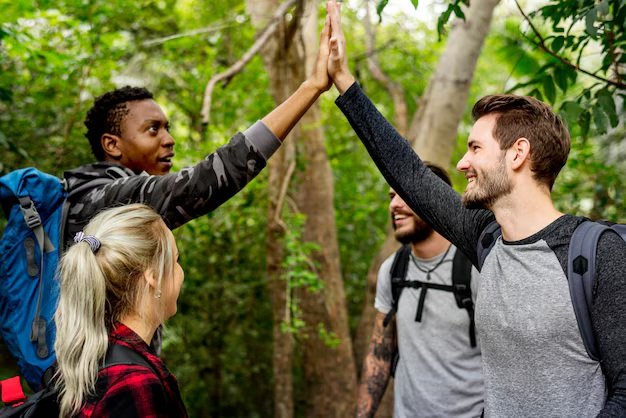Rewilding Economics — The Cost of Bringing Species Back Versus the Services they Restore
Rewilding—letting nature recover, reintroducing missing species and restoring natural processes—has moved from bold experiment to mainstream tool in conservation. The debate no longer stops at whether rewilding improves biodiversity: it now asks whether the money spent to bring species back is justified by the benefits they deliver to people and economies.

The Price of Returning Nature: Upfront Costs and Who Pays
Rewilding is not free. Costs appear in many forms: fees for translocation and veterinary checks, long-term monitoring, infrastructure to reduce conflicts (fences, compensation schemes), and the social costs when local people lose access or face new risks. For example, states that host wolves pay real management and compensation bills. In Wyoming, official figures show ongoing management costs and livestock payments measured in the hundreds of thousands of dollars a year—numbers that feed local debates about whether reintroductions are affordable for rural communities. According to local reporting and state data, routine management and compensation in recent years have been on the order of hundreds of thousands per year.
Restoring forests, wetlands, or rivers at the landscape scale adds to project development costs. A 2024 chapter summarising forest-restoration economics highlights that costs vary widely depending on site conditions, scale, and methods used. It cautions policymakers that up-front spending can be substantial and must include budgets for monitoring and adaptive management. According to the chapter, properly assessing costs is essential for measuring long-term value.
Who should pay? Different models exist: direct government funding, agri-environment payments, public donations, private investments, and, more recently, market mechanisms (carbon and water credits). Payments for ecosystem services are being trialled in some places so beneficiaries—downstream towns, water utilities or tourism operators—help fund the restoration that protects them.
What Nature Pays Back: Tourism, Ecosystem Services and Local Livelihoods
Some returns are obvious and immediate: people come to see charismatic species. Yellowstone’s wolves are the classic example. After wolves were reintroduced in the 1990s, visitor surveys and economic analyses found a measurable boost in tourism. A 2005-style analysis, updated by agencies and NGOs over time, indicates that wolf-related tourism and the spending it generates in nearby communities are valued in the tens of millions of dollars annually—supporting hotels, guides, and restaurants in gateway towns. According to Defenders of Wildlife and National Park Service regional data, more recent figures link wolf recovery to tens of millions of dollars in regional economic activity.
Not all benefits are tourism. Ecosystem engineering by species creates services with direct monetary value. Beavers are a live laboratory: their dams slow flood peaks, trap sediments, purify water and create wetland habitat. A meta-analysis of beaver-driven services concluded that “each service we evaluated is worth millions to hundreds of millions of US dollars (USD) annually” when aggregated across a wide area; the authors also show strong per-hectare values for recreation and biodiversity benefits.
Knepp Estate in southern England is the clearest recent case study of how rewilding can pay back in multiple ways. Once a heavily indebted conventional farm, Knepp moved to a “let nature do the work” model and diversified income into nature tourism, glamping, a butchery selling pasture-raised meat, events, and grants. That transformed the estate’s finances: Knepp now supports more staff and visitors and, according to researchers and reporting by The Guardian, is economically viable in ways that conventional farming there had not been. Isabella Tree, Knepp’s landowner and author, puts it plainly: “When we started the project… we had no idea there would be alternative income streams. We just knew it was the right thing to do for the land.”
Social science offers another angle: people’s willingness to pay for rewilding. A 2025 discrete-choice study in Germany’s Oder Delta found local populations generally willing to support holistic rewilding financially, though preferences vary by attribute (for example, some people dislike large carnivores). The study shows that public backing—and therefore potential local financing—exists, but it also highlights that acceptance is heterogeneous and trade-offs must be managed.
Balancing the Ledger: Decisions, Trade-offs and Actionable Advice
Drawing out an honest balance sheet matters. A few big lessons come through from projects and the literature.
First, value the full suite of benefits. Rewilding rarely produces single-line items. Benefits are ecological (biodiversity, carbon, soil health), economic (tourism, new products, avoided costs like flood damage), and social (mental health, recreation, cultural value). Frameworks such as TEEB and UN analyses encourage governments to add these together rather than compare only short-term farm revenues versus a wildlife metric.
Second, factor in distributional effects and compensate fairly. When predators return or beavers flood fields, costs can fall on a few landowners while many in society benefit. That spatial mismatch creates conflict. The beaver literature explicitly recommends payment-for-ecosystem-services schemes to offset local disservices while capturing the large public gains.
Third, design projects to stack revenues: nature-based tourism, sustainable harvesting (wild meat, timber where appropriate), carbon credits and public funds can combine to make rewilding financially robust. Knepp’s model—mixing tourism, direct sales and research partnerships—is a replicable template, though site-specific adaptation is essential.
Fourth, invest in monitoring and adaptive management. Costs do not disappear once a species is returned; long-term tracking is needed to measure outcomes, adapt interventions and maintain public trust. Experts in forest and wetland restoration warn that underfunding monitoring leads to poor outcomes and wasted money.
Fifth, engage local people early and openly. The Oder Delta willingness-to-pay study in Germany shows that people’s preferences are nuanced—some accept wolves in principle but resist them nearby. Good consultation, transparent compensation and shared local benefits reduce “not in my backyard” blockages.
A short table to compare four real-world case studies (figures are illustrative summaries drawn from the cited studies and reporting):
| Site / Project | Headline gain | Typical annual economic benefit (reported) |
|---|---|---|
| Yellowstone wolves (Greater Yellowstone) | Tourism uplift and broader ecosystem recovery | Tens of millions USD per year in regional spending (estimates $18–80M depending on scope). |
| Knepp Estate (UK) | Wildlife comeback + new income streams (glamping, butchery, tours) | Estate recovered profitability; full-time staff rose from ~23 to ~90; significant visitor spending. |
| Beaver reintroductions (UK & Europe) | Water filtering, flood buffering, biodiversity | Per-hectare values for recreation and biodiversity are high; aggregate services reach millions USD across ranges. |
| Oder Delta (Germany) rewilding study | Public willingness to co-finance rewilding | Demonstrated positive willingness-to-pay among locals for holistic rewilding attributes (varied by attribute). |
These examples show that while costs can be real and concentrated, benefits—when carefully measured and financed—can be large, diverse and sometimes surprising.
Advice for Policymakers, Funders and Landowners
- Build comprehensive benefit–cost frameworks for each project. Don’t stop at the price of translocation—include avoided costs (flood damage, water treatment), tourism, carbon and non-market values. Use standard valuation tools and, where possible, include local willingness-to-pay studies.
- Create fair compensation and sharing mechanisms. If local people bear risks (killed livestock, flooded fields), set up payments or insurance so benefits are shared and opposition drops. Beaver studies and the broader literature recommend PES-style schemes in such cases.
- Stack revenue streams. Combine public grants, nature tourism, sustainable product sales and carbon or water credits to make projects resilient—Knepp shows how diversification matters.
- Invest in long-term monitoring and adaptive management. Pay for data: it reduces risk, improves outcomes and signals commitment. Restoration-economics reviews stress the importance of monitoring budgets.
- Treat rewilding as social as well as ecological. Research in the Oder Delta shows public preferences vary; early engagement, clear communication and shared governance avoid costly delays or cancellations.
Listen to the people who have done it. Isabella Tree at Knepp—once a struggling farmer—sums the human side up: “Rewilding is farming’s most natural ally… we’ve got to think about our intake of meat and where it comes from.” Her story is a living example that the right mix of humility, entrepreneurship and public support can turn ecological restoration into social and economic renewal.







